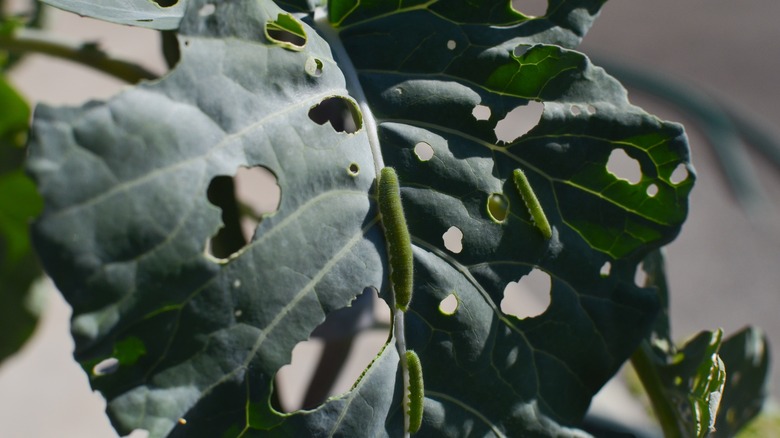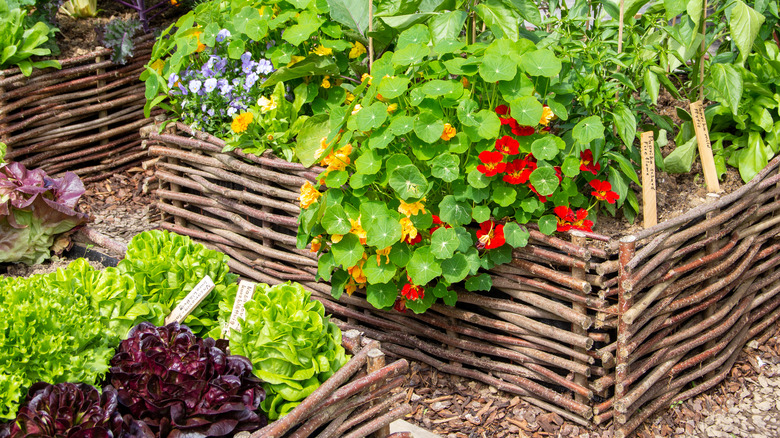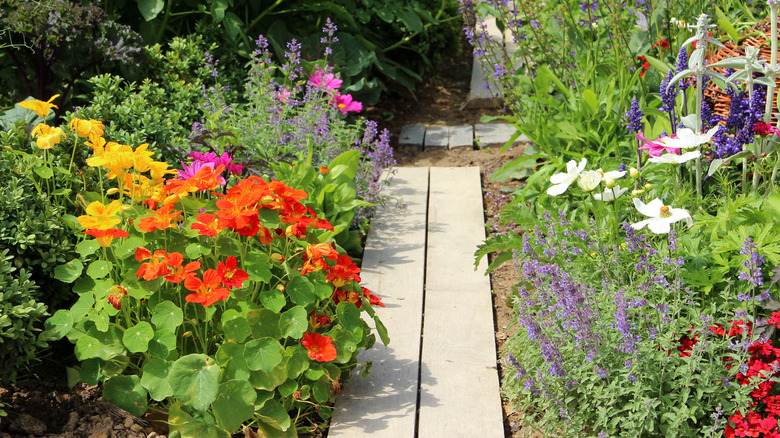Deter Insects Naturally With This Fast-Growing Garden Classic
There are few things more frustrating than having your garden decimated by insects. One popular and eco-friendly strategy for protecting growing produce is to place other plants nearby that may deter or distract the pests. While many flowers are reported to be beneficial companion plants, one of the most beloved is the nasturtium (Tropaeolum majus). Nasturtiums aren't just easy-to-grow flowers that even the worst gardener can handle; they also come in a myriad of fun and vibrant colors and are even edible. Best of all, studies support the belief that nasturtiums can naturally discourage some pests from destroying your vegetables by acting as a trap crop. In other words, they can effectively draw insects away from your more vulnerable plants.
Nasturtiums are great fast-growing flowers to add to your garden. Their blooms come in colors ranging from bold reds, yellows, and purples to softer pinks and peaches. However, their beauty goes beyond just the flowers, as nasturtiums also have distinctive round leaves that grow in a charming trailing habit. While only a perennial in zones 9 through 11, nasturtiums grow well as annuals in most zones as long as you plant them in well-draining soil after the last frost of the year. While nasturtiums grow best in full sun, they can also tolerate part-shade, adding to their versatility in the garden.
The effectiveness of nasturtiums as a trap crop
Nasturtiums are ideal companion plants for a variety of species, including brassicas like broccoli and cabbage. A 2010 study at Iowa State University found that cole crops had significantly less damage from cabbage worms and cabbage loopers when they were planted with nasturtiums. While the study did not speculate on why the nasturtiums were beneficial, they likely acted as a trap crop or a sacrificial plant that lured the cabbage worms and loopers away from the cole crops. Other plants like lettuce that are regularly damaged by cabbage loopers also showed less pest damage when they were grown near nasturtiums.
Impressively, the Iowa State University study also found that squash plants benefit as well from having nasturtiums as neighbors. Zucchini plants growing near nasturtiums showed less damage from squash bugs and striped cucumber beetles than those without nasturtiums nearby. It's worth putting in the effort to get squash bugs out of your garden, as they don't just damage your plants' leaves but can also spread diseases like cucurbit yellow vine disease. It is also widely believed that nasturtiums can help with other pests like aphids and flea beetles by behaving as a trap crop as well. Therefore, placing this flower near any produce that may be affected by these common pests, including tomatoes, melons, cucumbers, beans, potatoes, peppers, and a wide variety of other plants, could keep your produce pest-free.
How to use nasturtiums as a trap crop
When using nasturtiums as a trap crop, it's best to place them around 8 to 12 feet away from the plants you are trying to protect. Ideally, the nasturtiums will lure pests to them and away from your more delicate crops. It is also a good idea to start your nasturtiums early, as some plants like squash can be very fast growing. That way your plants can mature together and the nasturtiums can actually be beneficial for pest control. Further, also keep in mind that nasturtiums are considered invasive in some areas, so planting them in a container or a contained area may be best.
As the growing season goes on, your nasturtiums will likely show signs of pest damage. Depending on the severity of the damage and the type of insect, you may want to try blasting the bugs off with a hose or using a horticultural oil like neem oil so that your flowers can continue to lure pests away from your other plants throughout the rest of the season. If the nasturtiums become completely infested, then you may have to remove them from your garden to prevent the insects from spreading to your other crops. Try out different planting arrangements to take advantage of nasturtiums' incredible power as a companion plant.


